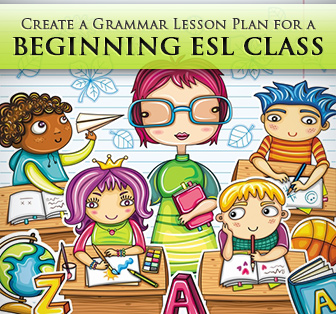Present, Practice, Produce: 4 Go to Strategies for Teaching Language Concepts


Teaching a beginning level class can be very exciting, watching students learn, seeing the light bulbs come on, but it can also be very challenging. If you are teaching students with no English background, you may find yourself starting with the ABC’s. If your students have had some past experience with language learning, you may not need to cover the most basic building blocks, but you’ll still be tackling the foundations of the language. The good news is that beginning students learn quickly. You have plenty of topics to choose from, and you may have more freedom in the grammar topics you cover than teachers of more advanced classes do. So where do you start when it’s time to get ready for that beginner class?

The first step of any good lesson plan is determining the outcomes you are looking for. What grammatical concept are you going to teach? Common in beginning classrooms are the simple tenses, prepositions, adjective and adverb use, sentence structure, information questions and yes/no questions. Choose one, then think about what you want your students to accomplish. Do you want to introduce them to the topic? Give them practice? See them master a skill? The rest of your lesson plan will depend on the answers to these questions. In fact, they might all be goals for the same class but over multiple class periods.
When you get to class, you should start your lesson by introducing the topic to your students. You should show them the structure you are teaching, and be sure to give them one or two simple examples. You will also want to explain why they need to know this topic since it will motivate your students and help them put a tangible context to what they are learning. Of course, since they are beginners you may not be able to get all the why’s across, but do what you can. The point is for your students to see the grammatical concept as practical and useful.
After you introduce the topic to your students, be sure to give plenty of correct examples of the grammatical structure. Simple examples are good, but don’t be afraid to show your students something a little more complex. You are not expecting them to produce the structure like a native speaker at this point, but giving them realistic examples shows them what they may be able to do once they have their foundation in place. Some teachers shy away from using realia in the beginning classroom, but it’s never too early for your students to see how language is really used. In your examples, include one or more from authentic language sources. Try looking in a newspaper, a blog or an advertisement for examples, or listen to the people around you and note how these native speakers use language in their everyday speech.
Now that your students have seen the target structure used correctly, it’s time to give them some practice. Exercises in grammar books will do the job, but your students will benefit from a little extra effort and planning on your part. Try to include a variety of activities that will appeal to several different learning styles. Try using props (like index cards or post its) to arrange words in a sentence. Have oral practice as a group and with partners. Sing a song if you know one, or make one up. Direct your students to a website where they can work on interactive quizzes. Get your students up and moving, linking physical movement with grammatical concepts. The more variety they have in their practice session, the more easily your students will remember the concept you are teaching. Don’t leave out good old written practice, but saving it for homework is best.
Have your students learned the concept you are teaching? Probably, if you have followed this plan step by step, but it is still necessary to do some type of assessment with your class. Assessment doesn’t have to be taking a test, and you certainly don’t want to spring a quiz on your students the first day you teach a concept. An assessment simply measures how well your students are performing with the given grammatical concept and whether or not they are meeting the goals you set. Once you have reached the end of your lesson, go back to the goals you set in step one. Check to see if each student has accomplished each goal you outlined. You can do this through simple observation, or you can require more formal written evidence. Vary your assessment according to the goal you have set. If a majority of your students have not met your objective, you know you will have to follow up tomorrow with more activities to help them reach your goals.
Preparation, modeling and practice are key. Also, checking to make sure your students have learned what you were teaching will ensure the success of your grammar lesson. Give your students positive feedback when you see them succeeding, and move on to the next challenge once they do.
How many days do you typically spend teaching one grammatical concept to beginners?